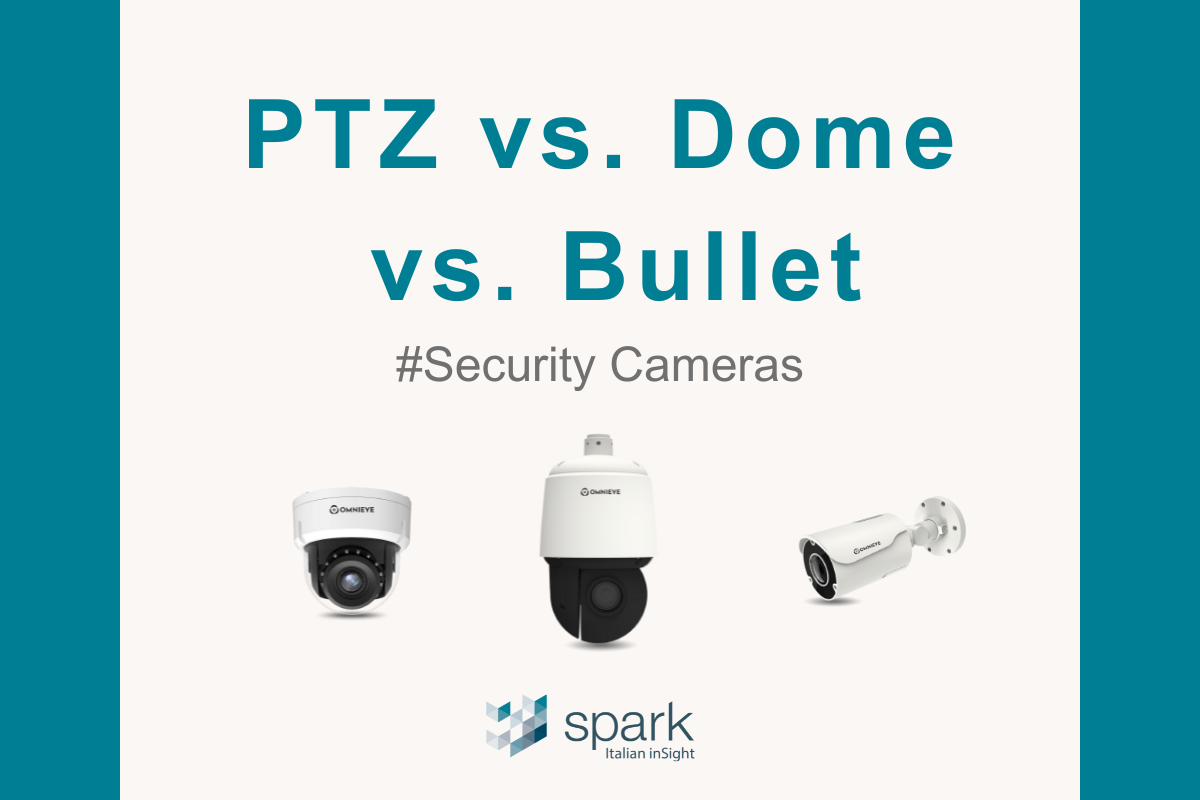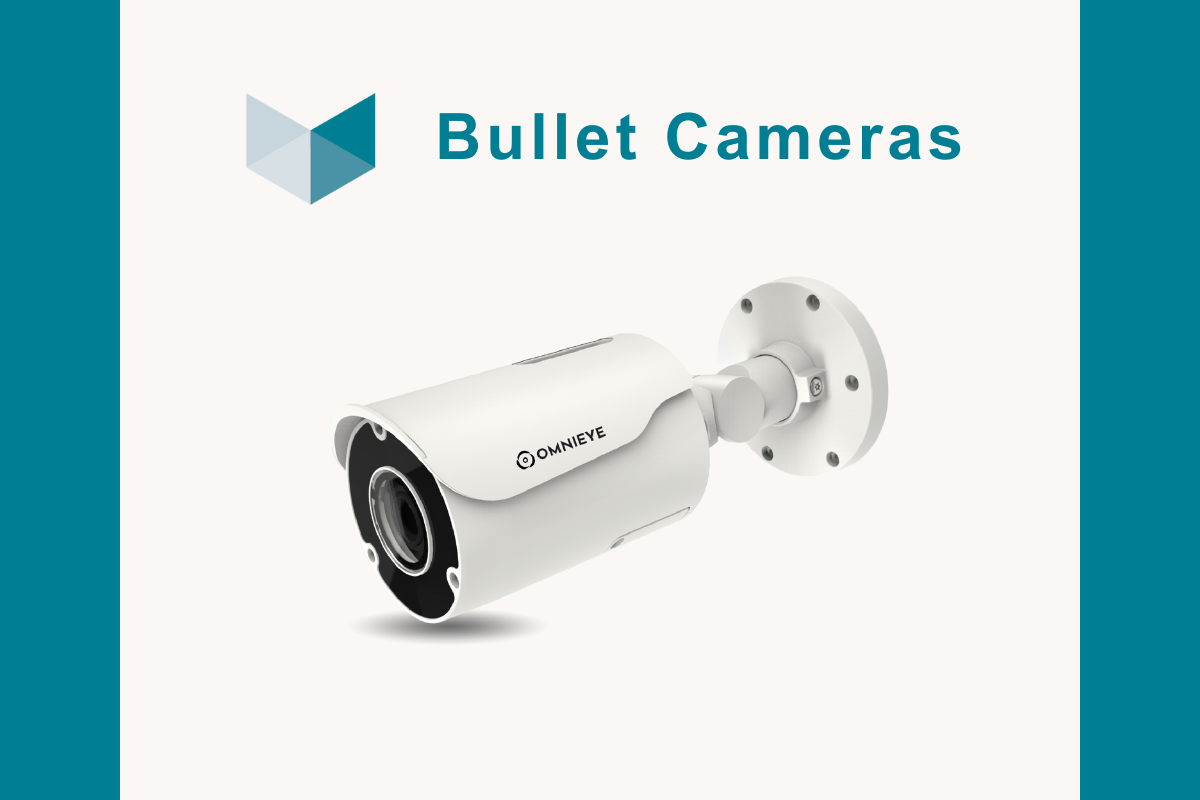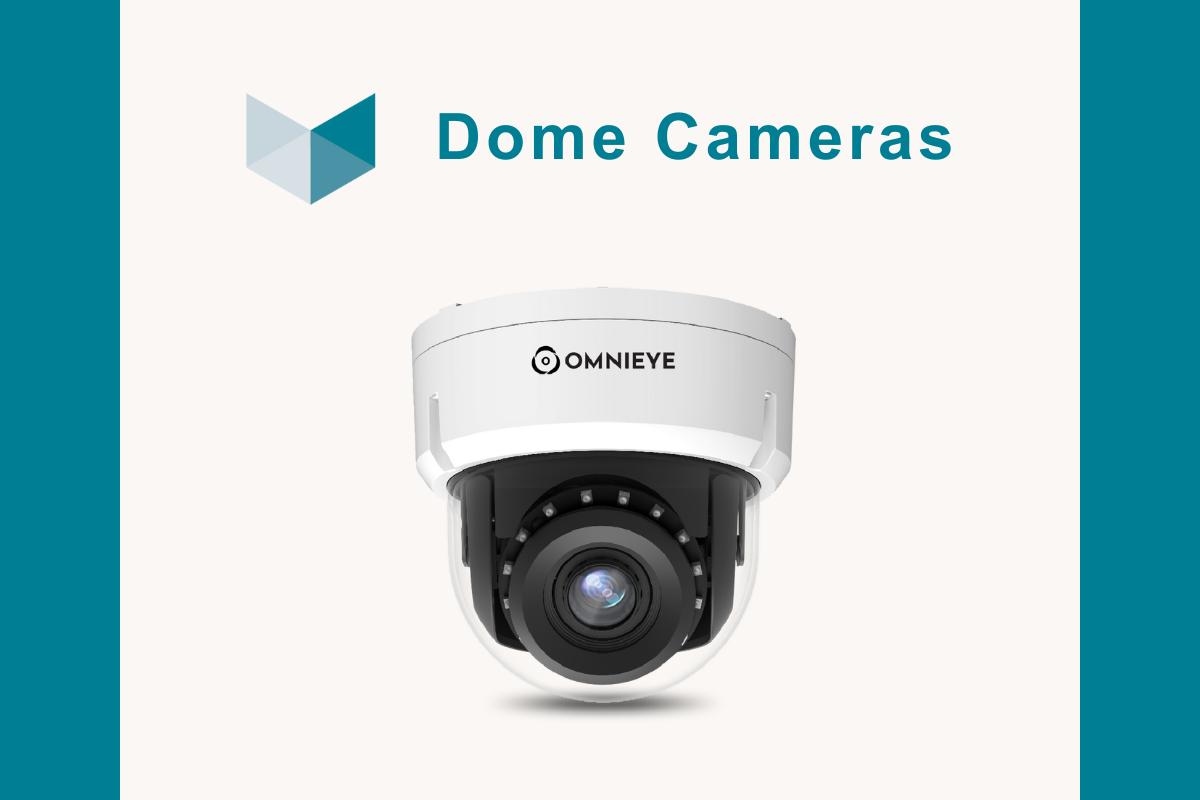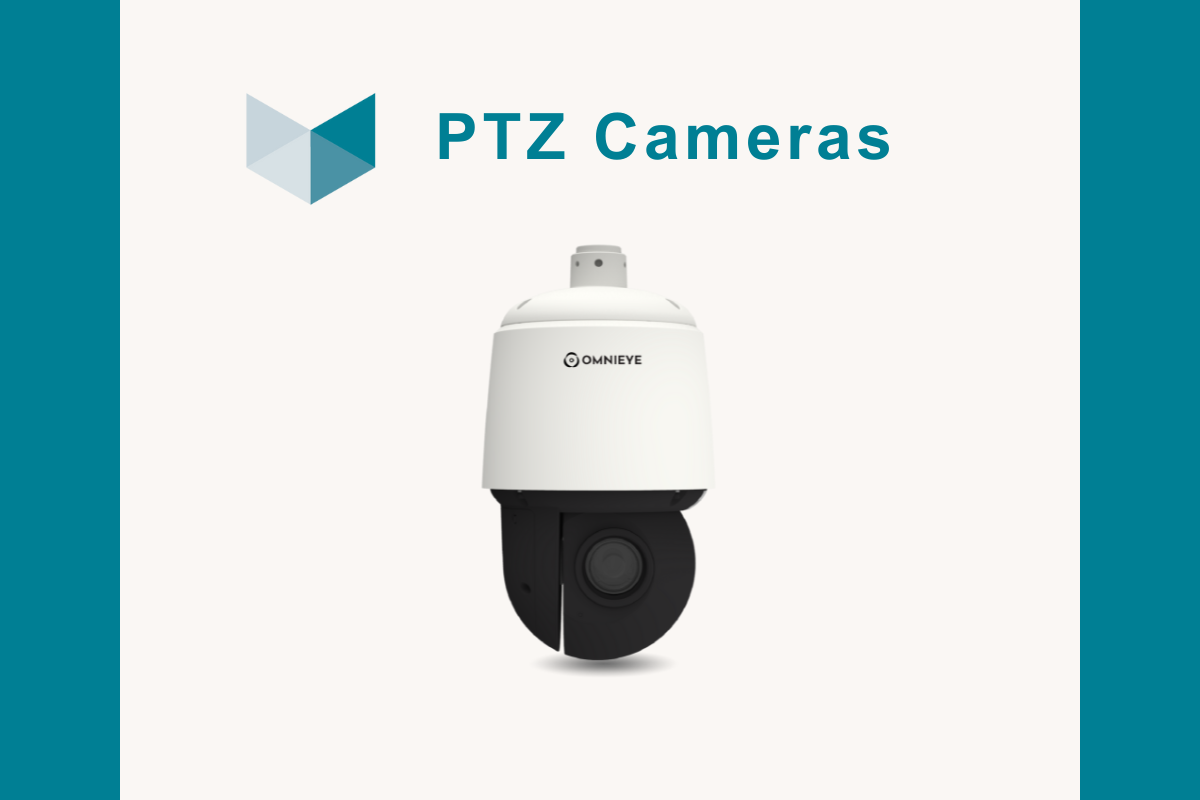2024.08.25
Whether in residential, commercial, or public spaces, surveillance cameras play a critical role in ensuring property security and enhancing monitoring effectiveness. There are many types of surveillance cameras on the market, among which bullet, dome, and PTZ cameras are the three most common types. Each of these cameras has unique designs and functional characteristics, making them suitable for different scenarios and needs.
In this article, we will analyze these three common types of surveillance cameras, highlighting their design differences and respective advantages and disadvantages. Through detailed comparisons and analyses, readers will gain a clearer understanding of the various camera options available and be able to choose the appropriate surveillance camera based on their actual needs. Whether you are a homeowner looking for protection, a manager of a commercial space, or a reader interested in surveillance technology, we hope this article will provide you with useful information and guidance.

Bullet Security Cameras/IP Cam
Bullet cameras typically have a cylindrical shape, making them suitable for outdoor or large open spaces. These cameras often come equipped with high-resolution recording capabilities and night vision features, enhancing monitoring efficiency and accuracy. Additionally, the lenses of bullet cameras are usually adjustable in focal length (some also have fixed lenses), allowing users to set them according to their needs.

Applications of Bullet Cameras:
Bullet cameras are particularly well-suited for large parking lots, schools, malls, and other public spaces. Many businesses and institutions currently opt for these cameras to ensure comprehensive surveillance. For instance, installing bullet cameras in a large shopping mall has been shown, based on user feedback, to effectively reduce the incidence of theft and provide customers with a sense of security.
Dome Security Cameras/IP Cam
Dome cameras, often referred to as ceiling-mounted cameras, have a design that typically resembles a hemisphere. Their low-profile appearance is less disruptive to interior design, making them ideal for indoor spaces. These surveillance devices usually employ wide-angle or fisheye lenses, allowing for greater coverage and the advantage of hidden installation, enabling them to blend seamlessly into their surroundings. Furthermore, dome cameras often come with two-way audio capabilities, facilitating interaction during monitoring.

Applications of Dome Cameras:
Dome cameras are suitable for enclosed spaces such as stores, shopping malls, offices, conference rooms, and residences. Their wide field of view can cover the overall situation in large meeting rooms or expansive facilities. As a result, many businesses choose to install dome cameras in office environments to enhance surveillance and ensure employee safety. Although they tend to be priced lower than bullet cameras, they offer practical advantages in terms of functionality and effectiveness in specific settings.
PTZ(Pan-Tilt-Zoom) Security Cameras/IP Cam
PTZ cameras (Pan-Tilt-Zoom cameras) are high-performance network cameras with a unique spherical design that allows for 360-degree rotation. They have pan, tilt, and zoom functions, enabling automatic adjustments of focal length and shooting angles as needed. These cameras typically feature high-resolution lenses and night vision capabilities, making them particularly suitable for wide-area monitoring and capturing specific details.

Applications of PTZ Cameras:
PTZ cameras are ideal for installation at high points in large environments, such as shopping malls, stadiums, airports, and city squares. In many cases, cities choose to install PTZ cameras at critical traffic intersections, allowing for quick adjustments of the shooting angle to monitor traffic conditions and reduce the occurrence of accidents.
When choosing a surveillance camera, bullet, dome, and PTZ cameras each have their own advantages and disadvantages. Bullet cameras are suitable for long-distance monitoring, dome cameras perform well in indoor environments, and PTZ cameras are favored for their adaptability and flexibility. Users should consider their actual needs, installation environment, and budget when selecting the most appropriate camera model. To make the best purchasing decision, it is recommended to review the technical specifications of each model for more detailed information.
 |
To learn more about camera specifications and pricing information, please click the button above to fill out your details, and a representative will contact you.
Further Reading
What does IP68 water/dust rating actually mean? Ingress Protection (IP) ratings
Whether in residential, commercial, or public spaces, surveillance cameras play a critical role in ensuring property security and enhancing monitoring effectiveness. There are many types of surveillance cameras on the market, among which bullet, dome, and PTZ cameras are the three most common types. Each of these cameras has unique designs and functional characteristics, making them suitable for different scenarios and needs.
In this article, we will analyze these three common types of surveillance cameras, highlighting their design differences and respective advantages and disadvantages. Through detailed comparisons and analyses, readers will gain a clearer understanding of the various camera options available and be able to choose the appropriate surveillance camera based on their actual needs. Whether you are a homeowner looking for protection, a manager of a commercial space, or a reader interested in surveillance technology, we hope this article will provide you with useful information and guidance.

Bullet Security Cameras/IP Cam
Bullet cameras typically have a cylindrical shape, making them suitable for outdoor or large open spaces. These cameras often come equipped with high-resolution recording capabilities and night vision features, enhancing monitoring efficiency and accuracy. Additionally, the lenses of bullet cameras are usually adjustable in focal length (some also have fixed lenses), allowing users to set them according to their needs.

Applications of Bullet Cameras:
Bullet cameras are particularly well-suited for large parking lots, schools, malls, and other public spaces. Many businesses and institutions currently opt for these cameras to ensure comprehensive surveillance. For instance, installing bullet cameras in a large shopping mall has been shown, based on user feedback, to effectively reduce the incidence of theft and provide customers with a sense of security.
Dome Security Cameras/IP Cam
Dome cameras, often referred to as ceiling-mounted cameras, have a design that typically resembles a hemisphere. Their low-profile appearance is less disruptive to interior design, making them ideal for indoor spaces. These surveillance devices usually employ wide-angle or fisheye lenses, allowing for greater coverage and the advantage of hidden installation, enabling them to blend seamlessly into their surroundings. Furthermore, dome cameras often come with two-way audio capabilities, facilitating interaction during monitoring.

Applications of Dome Cameras:
Dome cameras are suitable for enclosed spaces such as stores, shopping malls, offices, conference rooms, and residences. Their wide field of view can cover the overall situation in large meeting rooms or expansive facilities. As a result, many businesses choose to install dome cameras in office environments to enhance surveillance and ensure employee safety. Although they tend to be priced lower than bullet cameras, they offer practical advantages in terms of functionality and effectiveness in specific settings.
PTZ(Pan-Tilt-Zoom) Security Cameras/IP Cam
PTZ cameras (Pan-Tilt-Zoom cameras) are high-performance network cameras with a unique spherical design that allows for 360-degree rotation. They have pan, tilt, and zoom functions, enabling automatic adjustments of focal length and shooting angles as needed. These cameras typically feature high-resolution lenses and night vision capabilities, making them particularly suitable for wide-area monitoring and capturing specific details.

Applications of PTZ Cameras:
PTZ cameras are ideal for installation at high points in large environments, such as shopping malls, stadiums, airports, and city squares. In many cases, cities choose to install PTZ cameras at critical traffic intersections, allowing for quick adjustments of the shooting angle to monitor traffic conditions and reduce the occurrence of accidents.
When choosing a surveillance camera, bullet, dome, and PTZ cameras each have their own advantages and disadvantages. Bullet cameras are suitable for long-distance monitoring, dome cameras perform well in indoor environments, and PTZ cameras are favored for their adaptability and flexibility. Users should consider their actual needs, installation environment, and budget when selecting the most appropriate camera model. To make the best purchasing decision, it is recommended to review the technical specifications of each model for more detailed information.
 |
To learn more about camera specifications and pricing information, please click the button above to fill out your details, and a representative will contact you.
Further Reading
What does IP68 water/dust rating actually mean? Ingress Protection (IP) ratings


